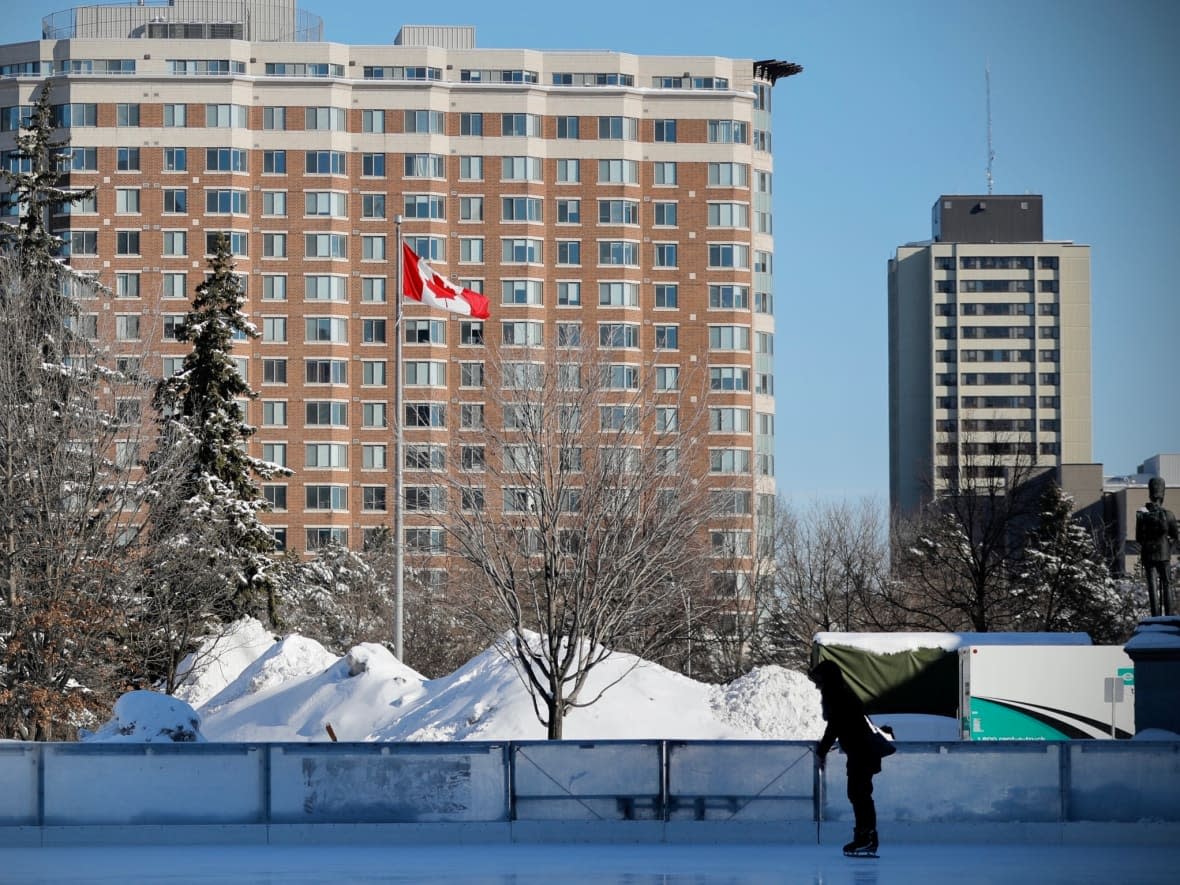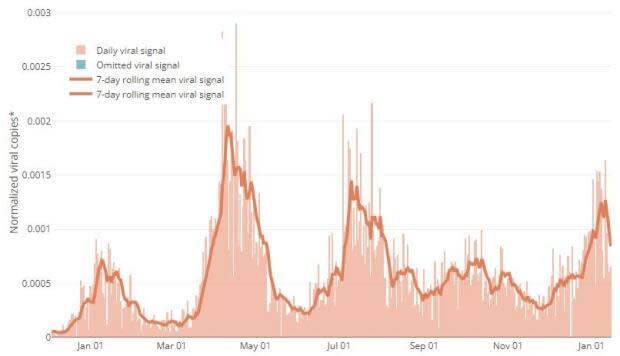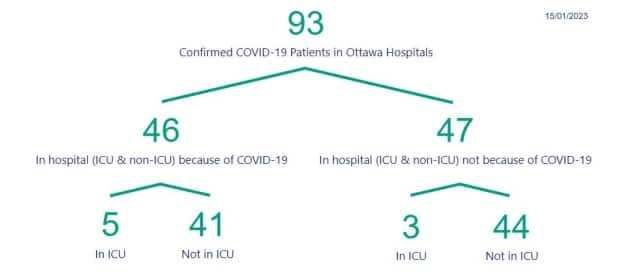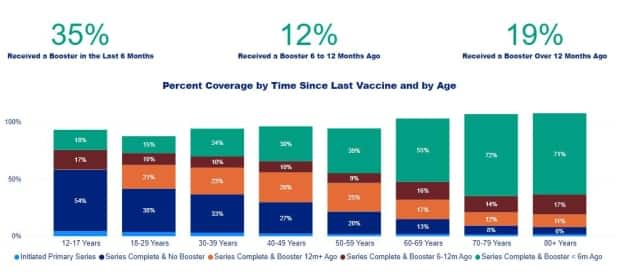Winter COVID-19 rise eases in latest update

Recent developments:
Ottawa's COVID-19 trends are stable at or dropping from high levels.
CHEO is treating older teens again as hospital pressure is 'stabilizing.'
More Ottawans age 12 and up were last boosted more than a year ago.
Wastewater trends outside Ottawa also drop after a spike.
The latest
Some of Ottawa's pandemic trends had reached very high levels last week. The dynamic has been different in the days since, whether that's been growth stopping or levels dropping.
While positive local health-care news has been elusive in recent weeks, CHEO said Tuesday it can now care for patients who are age 16 or 17 again as its situation stabilizes.
At the same time, other local hospitals say they remain incredibly busy and respiratory illnesses are a factor. Officials are trying to battle nonchalance around masking as high levels of COVID mixes with improved flu and RSV signals.
Experts strongly recommend people wear masks indoors and, in Ontario, in the days after having COVID symptoms. Staying home when sick, keeping surfaces clean and being up-to-date with COVID and flu vaccines also help protect vulnerable people.
CBC Ottawa takes a look at COVID trends on Tuesdays and Fridays. A broader look at respiratory illnesses comes on Wednesdays.
Wastewater
Data from the research team says the weekly average level of coronavirus in Ottawa's wastewater, as of Jan. 15, had dropped six of the last seven days after rising for about six weeks.
It's at its lowest average of the young year.

Hospitals
OPH's count of active, local COVID-19 hospital patients is stable at 25, according to Tuesday's update, with two patients in intensive care.
There is another count that includes other patients, such as people admitted for other reasons who then test positive for COVID, those admitted for lingering COVID complications, and those transferred from other health units.
That number rises again to where it was earlier in the month.

Tests, outbreaks and deaths
Ottawa's COVID-19 test positivity rate drops to near 14 per cent, around where it was before an early January spike. Testing strategies changed at the end of 2021 and many cases aren't reflected in counts.
There are 29 active COVID outbreaks in Ottawa. This count has been slowly dropping this month.
OPH reported 142 more COVID cases over four days and the deaths of two people who had COVID: one in their 70s and one age 90 or above. In all, 1,002 Ottawa residents who had COVID have died since the start of the pandemic.
Vaccines
Thirty-five per cent of Ottawans age 12 and older have had their most recent dose within the last six months, as is generally recommended, with older age groups having higher rates.
The percentage of residents who last received a booster more than a year ago continues to grow.
This does not factor in immunity from getting COVID.

About 4,150 Ottawa residents had a COVID vaccine in the previous week, roughly the same as the week before that and fewer than the average week in autumn. Most were third or fourth doses.
As of the most recent weekly update, 93 per cent of Ottawa residents aged five and up had at least one COVID vaccine dose, 90 per cent had at least two and 62 per cent at least three.
Thirty-six per cent of Ottawans aged 12 and older had at least four doses.
About 9,650 residents younger than five have had a first dose, which is about 21 per cent of Ottawa's population of that age group. About 5,250, or 11 per cent, have had two.
Across the region
Spread
The coronavirus wastewater average in Kingston and Leeds, Grenville and Lanark (LGL) counties is dropping after a spike. West of Kingston, it's stable. Data for other areas outside Ottawa is out of date or unavailable.
The average COVID test positivity falls to around 17 per cent in the Belleville area after a rise at the end of December. It's a stable 13 per cent in the Eastern Ontario Health Unit and drops to around 16 per cent in the Kingston area.
Hospitalizations and deaths
Eastern Ontario communities outside Ottawa report a drop to about 35 COVID-19 hospitalizations, with six patients in intensive care.
That regional count doesn't include Hastings Prince Edward (HPE) Public Health, which has a different counting method. It has 13 local COVID hospitalizations after spending December in single digits.
Western Quebec's health authority, CISSSO, reports 98 COVID hospitalizations. That number has been around that number since December. One of the patients is in intensive care.
One more COVID death was reported in LGL and the Kingston area. A total of 146 people with COVID have died in LGL and a total of 106 have died in and around Kingston.
Vaccines
The Kingston area's health unit says that 33 per cent of its population age five and up have had a booster vaccine in the last six months. That number is 27 per cent in HPE and unavailable elsewhere.
Across eastern Ontario, between 82 and 93 per cent of residents age five and up have received at least two COVID-19 vaccine doses, and between 53 and 66 per cent of those residents have had at least three.


